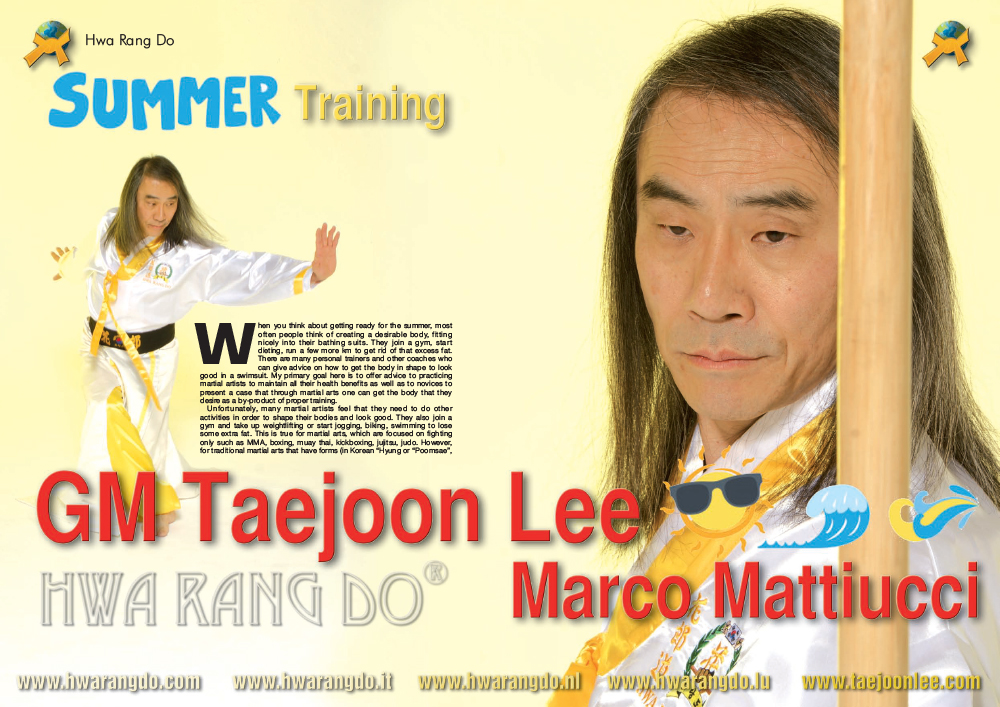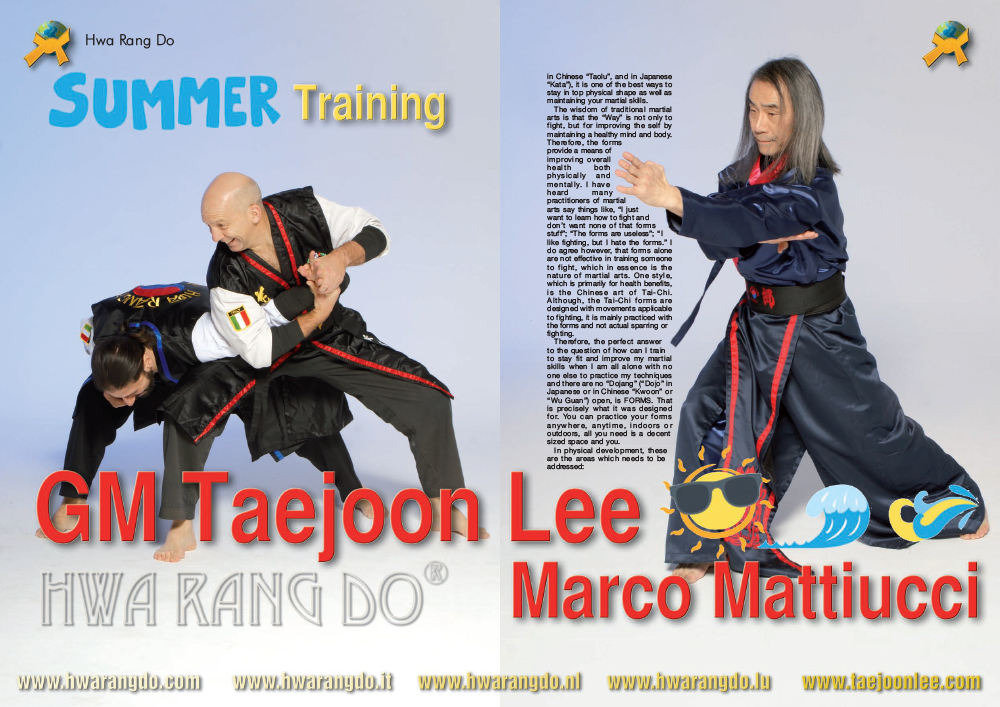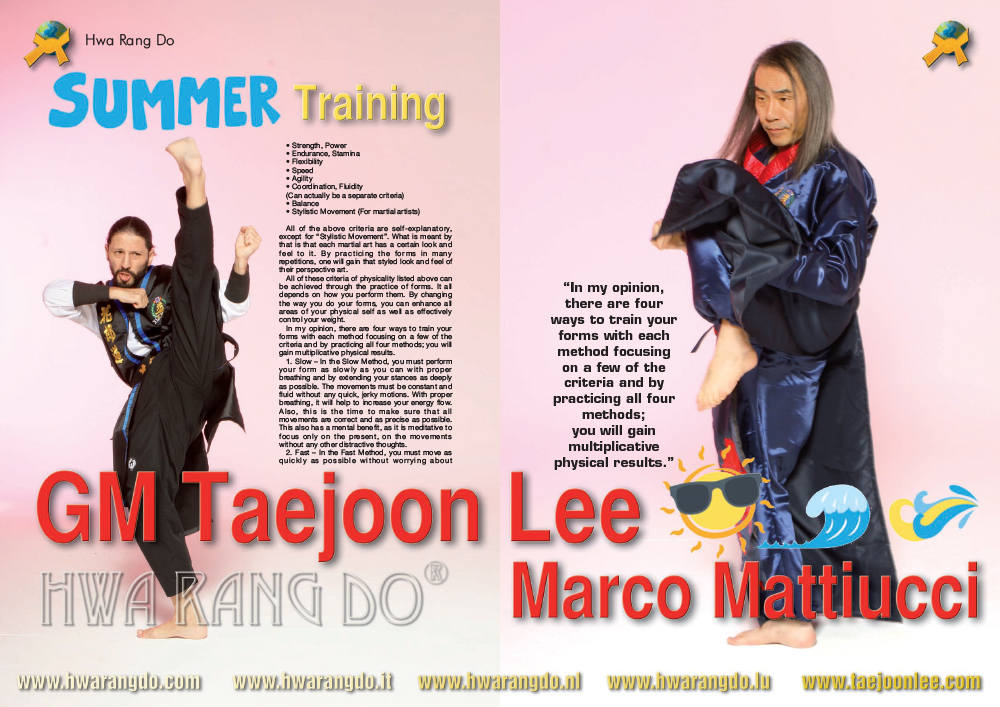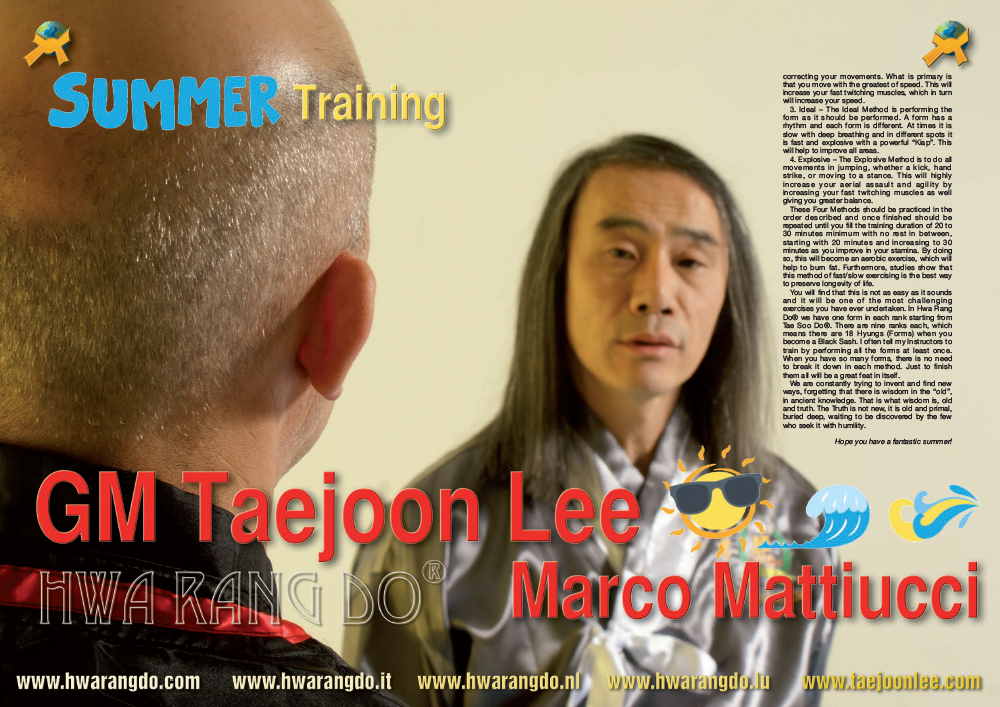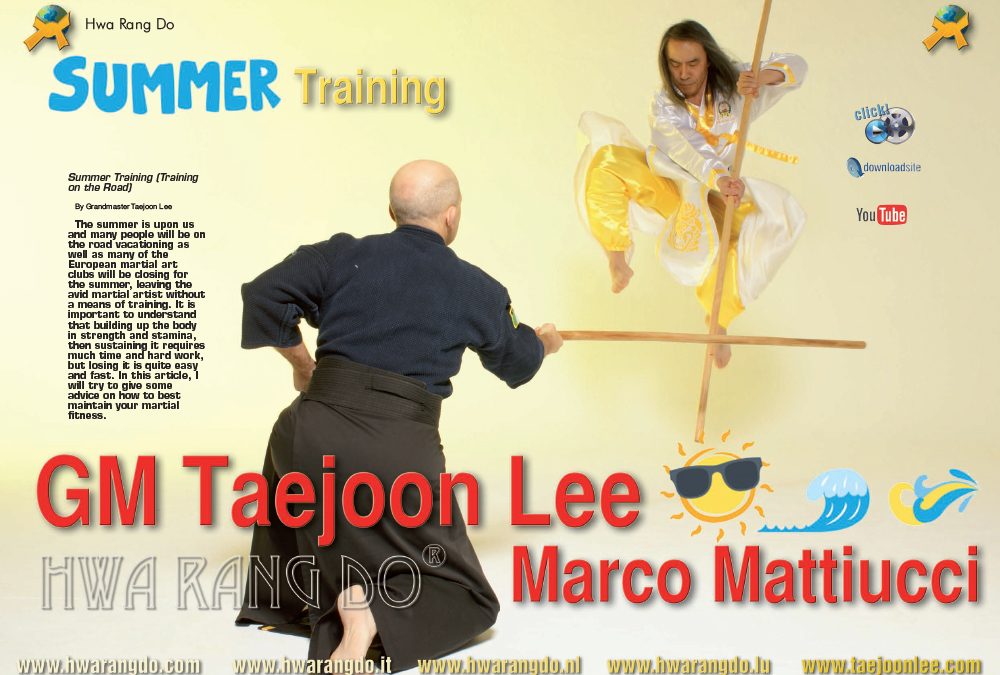Summer Training (Training on the Road)
Published in Budo International August 2019 Issue
By
Grandmaster Taejoon Lee
The summer is upon us and many people will be on the road vacationing as well as many of the European martial art clubs will closing for the summer, leaving the avid martial artist without a means of training. It is important to understand that building up the body in strength and stamina, then sustaining it requires much time and hard work, but losing it is quite easy and fast. In this article, I will try to give some advice on how to best maintain your martial fitness.
When you think about getting ready for the summer, most often people think of creating a desirable body, fitting nicely into their bathing suits. They join a gym, start dieting, run a few more km to get rid of that excess fat. There are many personal trainers and other coaches who can give advice on how to get the body in shape to look good in a swimsuit. My primary goal here is to offer advice to practicing martial artists to maintain all their health benefits as well as to novices to present a case that through martial arts one can get the body that they desire as a by-product of proper training.
Unfortunately, many martial artists feel that they need to do other activities in order to shape their bodies and look good. They also join a gym and take up weightlifting or start jogging, biking, swimming to lose some extra fat. This is true for martial arts, which are focused on fighting only such as MMA, boxing, muay thai, kickboxing, jujitsu, judo. However, for traditional martial arts that have forms (in Korean “Hyung or “Poomsae”, in Chinese “Taolu”, and in Japanese “Kata”), it is one of the best ways to stay in top physical shape as well as maintaining your martial skills.
The wisdom of traditional martial arts is that the “Way” is not only to fight, but for improving the self by maintaining a healthy mind and body. Therefore, the forms provide a means of improving overall health both physically and mentally. I have heard many practitioners of martial arts say things like, “I just want to learn how to fight and don’t want none of that forms stuff”; “The forms are useless”; “I like fighting, but I hate the forms.” I do agree however, that forms alone are not effective in training someone to fight, which in essence is the nature of martial arts. One style, which is primarily for health benefits, is the Chinese art of Tai-Chi. Although, the Tai-Chi forms are designed with movements applicable to fighting, it is mainly practiced with the forms and not actual sparring or fighting.
Therefore, the perfect answer to the question of how can I train to stay fit and improve my martial skills when I am all alone with no one else to practice my techniques and there are no “Dojang” (“Dojo” in Japanese or in Chinese “Kwoon” or “Wu Guan”) open, is FORMS. That is precisely what it was designed for. You can practice your forms anywhere, anytime, indoors or outdoors, all you need is a decent sized space and you.
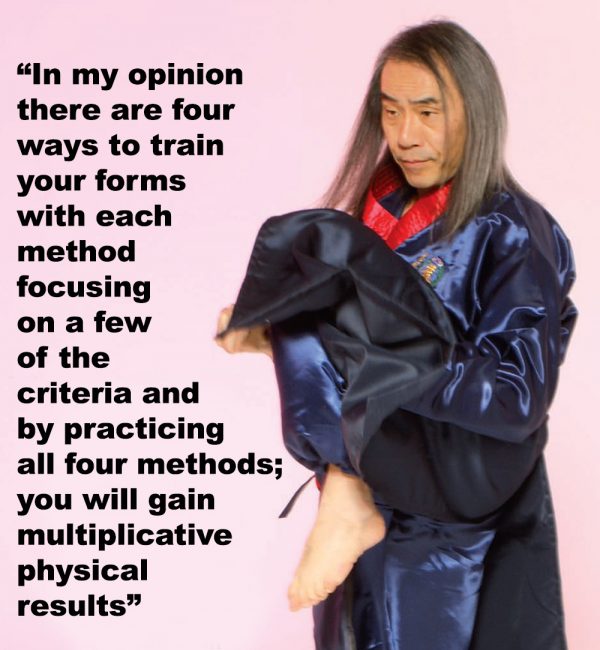
In physical development, these are the areas which needs to be addressed:
- Strength, Power
- Endurance, Stamina
- Flexibility
- Speed
- Agility
- Coordination, Fluidity (Can actually be a separate criteria)
- Balance
- Stylistic Movement (For martial artists)
All of the above criteria are self-explanatory, except for “Stylistic Movement”. What is meant by that is that each martial art has a certain look and feel to it. By practicing the forms in many repetitions, one will gain that styled look and feel of their perspective art.
All of these criteria of physicality listed above can be achieved through the practice of forms. It all depends on how you perform them. By changing the way you do your forms, you can enhance all areas of your physical self as well as effectively control your weight.
In my opinion, there are four ways to train your forms with each method focusing on a few of the criteria and by practicing all four methods; you will gain multiplicative physical results.
- Slow – In the Slow Method, you must perform your form as slowly as you can with proper breathing and by extending your stances as deeply as possible. The movements must be constant and fluid without any quick, jerky motions. With proper breathing, it will help to increase your energy flow. Also, this is the time to make sure that all movements are correct and as precise as possible. This also has a mental benefit, as it is meditative to focus only on the present, on the movements without any other distractive thoughts.
- Fast – In the Fast Method, you must move as quickly as possible without worrying about correcting your movements. What is primary is that you move with the greatest of speed. This will increase your fast twitching muscles, which in turn will increase your speed.
- Ideal – The Ideal Method is performing the form as it should be performed. A form has a rhythm and each form is different. At times it is slow with deep breathing and in different spots it is fast and explosive with a powerful “Kiap”. This will help to improve all areas.
- Explosive – The Explosive Method is to do all movements in jumping, whether a kick, hand strike, or moving to a stance. This will highly increase your aerial assault and agility by increasing your fast twitching muscles as well giving you greater balance.
These Four Methods should be practiced in the order described and once finished should be repeated until you fill the training duration of 20 to 30 minutes minimum with no rest in between, starting with 20 minutes and increasing to 30 minutes as you improve in your stamina. By doing so, this will become an aerobic exercise, which will help to burn fat. Furthermore, studies show that this method of fast/slow exercising is the best way to preserve longevity of life.
You will find that this is not as easy as it sounds and it will be one of the most challenging exercises you have ever undertaken. In Hwa Rang Do® we have one form in each rank starting from Tae Soo Do®. There are nine ranks each, which means there are 18 Hyungs (Forms) when you become a Black Sash. I often tell my Instructors to train by performing all the forms at least once. When you have so many forms, there is no need to break it down in each method. Just to finish them all will be a great feat in itself.
We are constantly trying to invent and find new ways, forgetting that there is wisdom in the “old”, in ancient knowledge. That is what wisdom is, old and truth. The Truth is not new, it is old and primal, buried deep, waiting to be discovered by the few who seek it with humility.
Hope you have a fantastic summer!
